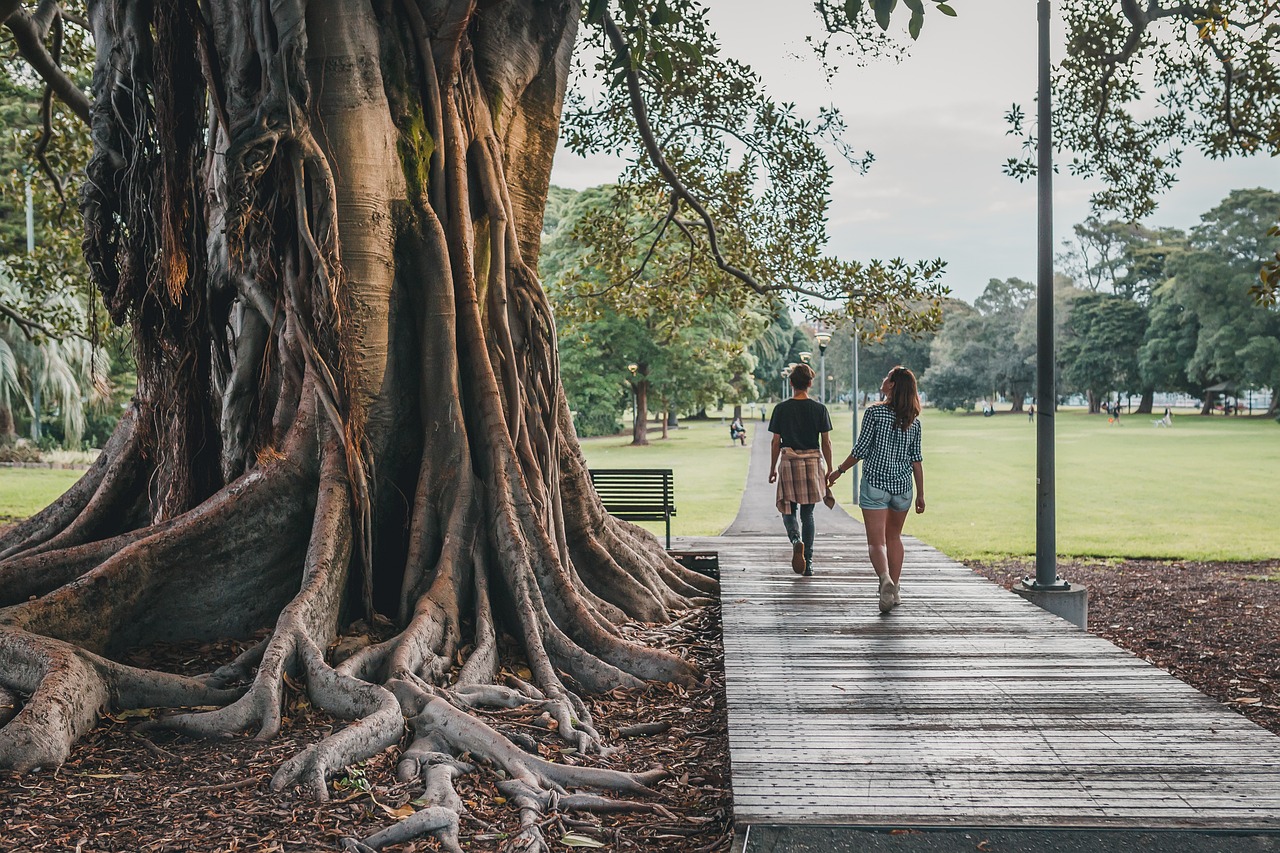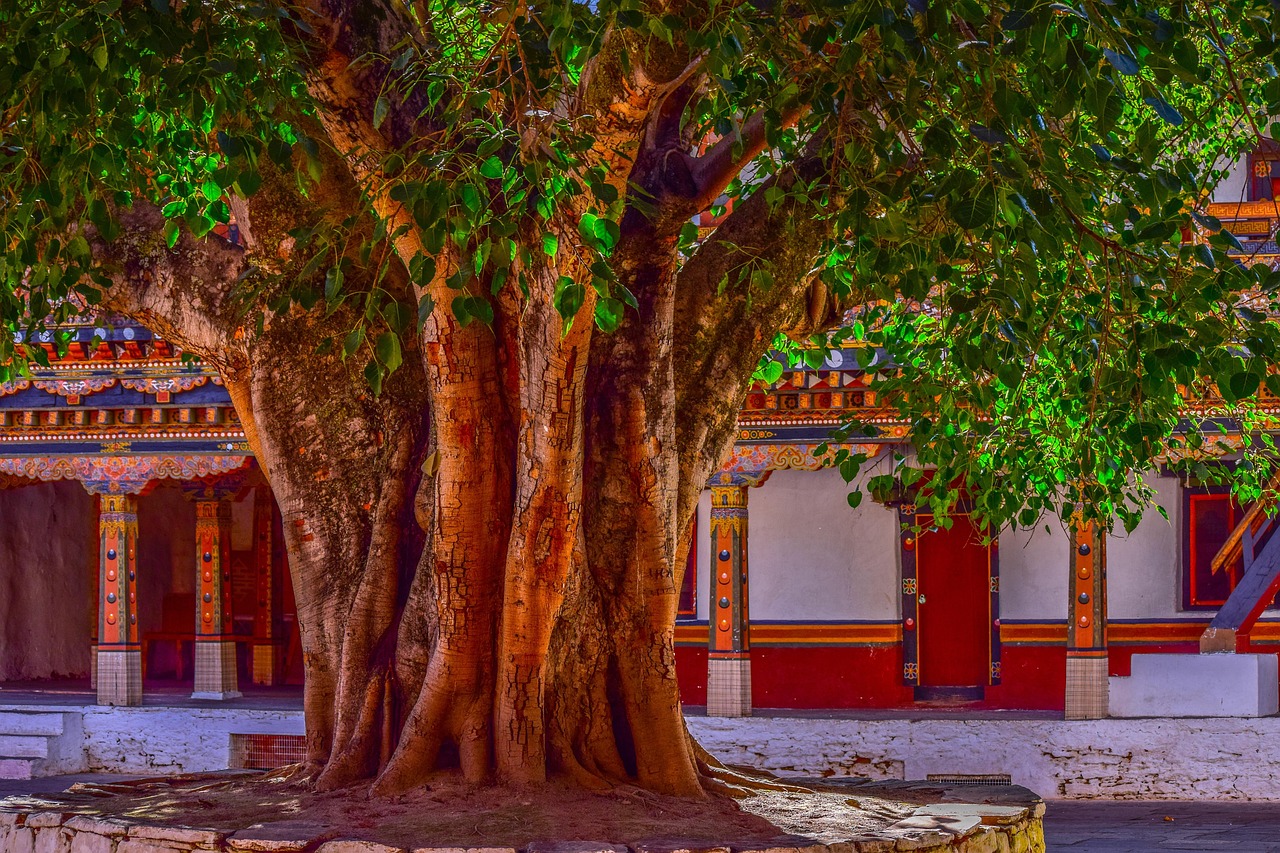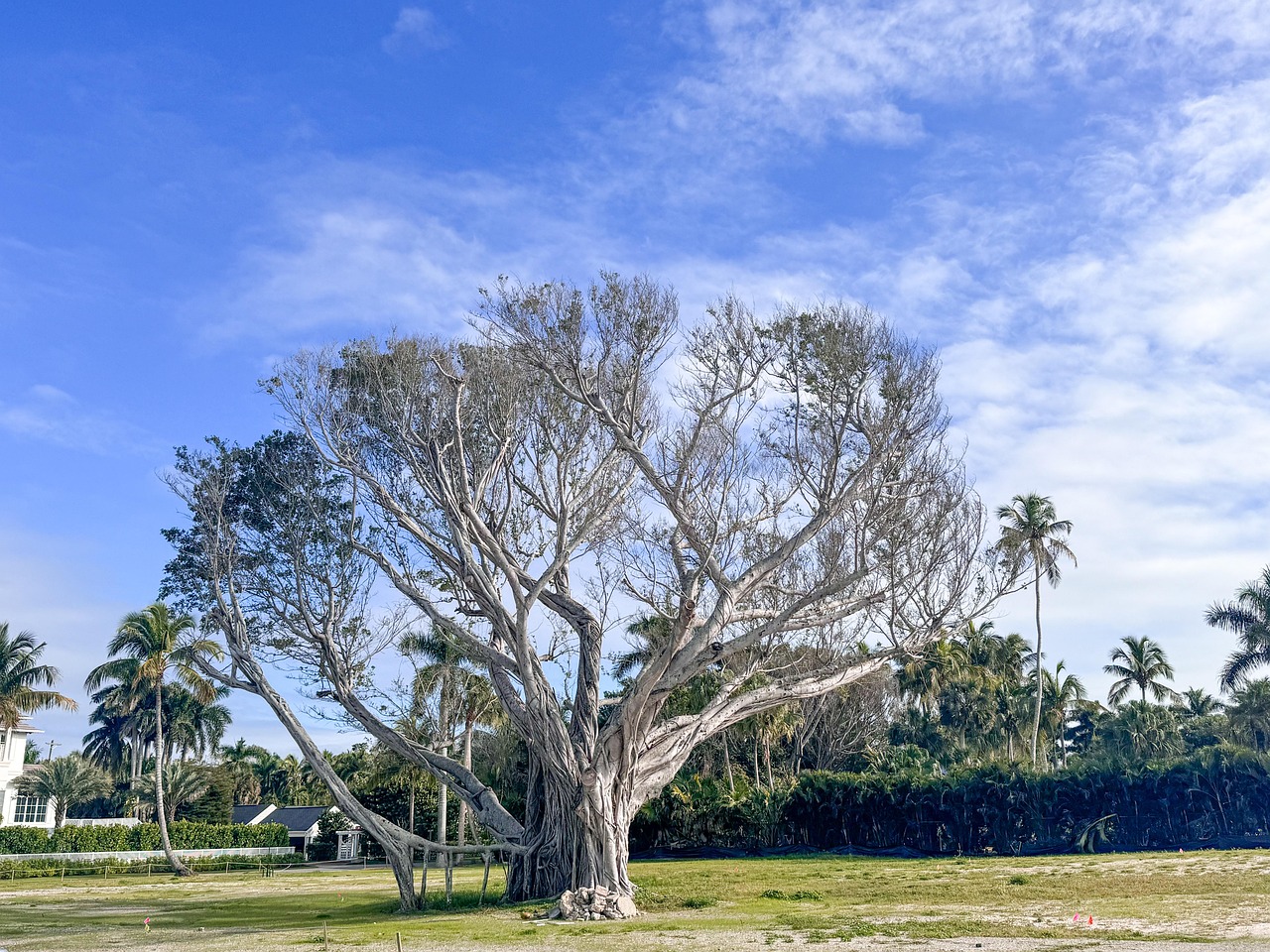The banyan tree holds significant meanings in traditional Hindi culture, symbolizing immortality, wisdom, and the interconnectedness of life. It is revered for its longevity and often represents family, shelter, and spiritual growth in various cultural narratives.
The banyan tree, known as “Vata” or “Bargad” in Hindi, is not just a tree; it is a powerful symbol deeply embedded in Indian culture and spirituality. This majestic tree can grow to enormous sizes, with its aerial roots descending to form new trunks. Its ability to live for centuries makes it a metaphor for endurance and resilience. In many Indian households, the banyan tree serves as a vital element of worship and community gatherings.

In the ancient texts and folklore, the banyan tree is often associated with various deities. For instance, it is believed that Lord Shiva resides in the banyan tree, making it a sacred site for devotion and prayer. Additionally, the tree is frequently mentioned in Hindu scriptures, such as the Mahabharata and the Puranas, highlighting its importance in mythology.
Symbolism of the Banyan Tree
The banyan tree embodies multiple layers of symbolism in traditional Hindi culture. Its characteristics reflect essential values and beliefs that resonate with the community. Here are some key symbolic meanings:
- Immortality: The banyan’s long lifespan signifies eternal life and is often seen as a representation of the soul’s journey beyond physical existence.
- Wisdom and Knowledge: Its vast canopy symbolizes sheltering wisdom. Many sages and saints have meditated under its shade, seeking enlightenment and deeper understanding.
- Family and Community: The banyan tree’s sprawling roots and branches signify strong familial ties and community bonds. It represents unity and support among family members.
- Protection: Traditionally, banyan trees are seen as protectors against natural calamities. Communities often gather around them for safety and solace.
The banyan tree’s presence is also significant during various festivals and rituals. For example, on the festival of “Banyan Day” or “Vata Savitri,” married women pray to the banyan tree for the well-being of their husbands. They perform rituals under this tree as a symbol of their devotion and faith.

Another fascinating aspect is the ecological role of the banyan tree. It provides shelter to numerous birds and animals, creating a mini-ecosystem. This nurturing aspect aligns with the idea of interconnectedness in nature, emphasizing the harmony between humans and the environment.
Cultural Significance
The banyan tree’s cultural importance extends beyond its symbolism. It serves as a gathering place for communities. People meet under its shade for discussions, storytelling, and celebrations. In rural areas, it often acts as a landmark and a meeting point for villagers.
Moreover, many folk tales revolve around the banyan tree. These stories often impart moral lessons or convey cultural values, reinforcing its role as an educational tool in society. The lush green foliage and sturdy trunk make it an ideal setting for storytelling, especially among children.

| Aspect | Significance |
|---|---|
| Immortality | Symbolizes eternal life and spiritual continuity. |
| Wisdom | Represents knowledge gained through meditation and experience. |
| Community | Illustrates strong family ties and social connections. |
| Ecological Role | Supports biodiversity by providing habitat for various species. |
The banyan tree also plays a role in various art forms, including paintings, poetry, and music. Its majestic form has inspired countless artists and writers throughout history, reflecting its deep-rooted presence in Indian culture.
Understanding the unique meanings of the banyan tree in traditional Hindi culture provides insight into its importance beyond mere botanical significance. It highlights how nature intertwines with spirituality, community values, and cultural identity.
Banyan Tree in Ayurvedic Practices
The banyan tree is not only significant in cultural and spiritual contexts but also plays an important role in traditional Ayurvedic medicine. Various parts of the banyan tree, including its bark, leaves, and roots, are known for their medicinal properties. Ayurvedic practitioners utilize these elements to treat a variety of ailments.

Here are some common uses of banyan tree components in Ayurveda:
- Bark: The bark of the banyan tree is often used to treat gastrointestinal issues. It is believed to aid digestion and alleviate stomach problems.
- Leaves: Banyan leaves are used in poultices to treat wounds and skin irritations. They possess anti-inflammatory properties that promote healing.
- Roots: The roots are known for their use in detoxification processes within the body. They help in purifying the blood and supporting liver function.
- Latex: The latex extracted from the banyan tree is used for its astringent properties, helping to tighten tissues and stop bleeding.
Medicinal Benefits
Understanding the medicinal benefits of the banyan tree provides insight into its practical applications in daily life. Here are some notable benefits:
- The bark can help reduce diarrhea and dysentery.
- Leaves can be used to create a soothing poultice for burns and cuts.
- Roots can be consumed as a tonic for improving overall health.
- Latex can help with dental issues, particularly for treating gum problems.
Banyan Tree in Festivals and Rituals
The banyan tree holds a special place during various festivals in India. Its association with prosperity and family well-being makes it a focal point during many rituals. One of the most notable celebrations is “Vata Savitri,” where married women pray for their husbands’ long life and health.
During Vata Savitri, women perform specific rituals under the banyan tree, which include:
- Fasting: Many women fast from sunrise to sunset, dedicating their day to prayer and reflection.
- Offering Prayers: Women offer prayers to the banyan tree, tying threads around its trunk as a symbol of their commitment to their husbands.
- Reciting Stories: The tales of Savitri and Satyavan, which highlight devotion, are recited during this festival.
Significance of Vata Savitri
This festival illustrates the deep-rooted belief in the protective nature of the banyan tree. It serves as a reminder of the strength and resilience required in marital relationships. By honoring the banyan tree, women seek blessings for harmony and longevity in their family life.
Banyan Tree as a Spiritual Symbol
The banyan tree is often considered a sacred symbol in various spiritual traditions within Hinduism. It is linked to several deities and philosophies that emphasize harmony with nature. The following points elaborate on its spiritual significance:
- Connection to Deities: Many believe that Lord Krishna and other deities reside within or near banyan trees, making them places of worship.
- Symbol of Enlightenment: Meditating under a banyan tree is thought to enhance spiritual clarity and insight, fostering a deeper connection to the divine.
- Cycle of Life: The expansive roots and branches of the banyan tree represent the cycle of life, illustrating how individuals are interconnected through experiences and wisdom.
Cultural Reflections in Art and Literature
The banyan tree’s significance extends to art and literature, where it serves as a powerful metaphor. In many poems, songs, and paintings, the banyan is depicted as a source of wisdom and strength. Artists often draw inspiration from its majestic form to convey emotional depth and cultural narratives.
Additionally, folk stories often incorporate the banyan tree as a character or setting, emphasizing its role in community life and moral teachings. This highlights how deeply ingrained the banyan tree is in the collective consciousness of Indian culture.
| Aspect | Description |
|---|---|
| Ayurvedic Uses | Bark, leaves, roots, and latex are utilized for various medicinal purposes. |
| Vata Savitri Festival | A celebration where women pray for their husbands’ longevity under the banyan tree. |
| Spiritual Symbolism | A representation of connection to deities and enlightenment through nature. |
| Cultural Reflections | The banyan tree appears frequently in art and literature, symbolizing wisdom. |
The multifaceted significance of the banyan tree in traditional Hindi culture showcases its importance beyond mere physical presence. It intertwines with health practices, spiritual beliefs, and artistic expressions, reinforcing its status as a revered symbol throughout India.
Banyan Tree in Folklore and Myths
The banyan tree is steeped in rich folklore and myths that have been passed down through generations. These stories not only highlight the tree’s significance but also reflect the values and beliefs of the culture. Many legends center around the banyan tree, attributing mystical qualities to it and linking it to ancient deities.
Some common themes found in banyan tree folklore include:
- Divine Shelter: In many tales, the banyan tree serves as a shelter for wandering saints and deities. It is believed that divine beings take refuge under its expansive canopy.
- Symbol of Wisdom: Sages often meditate under banyan trees in folklore, symbolizing their quest for knowledge and enlightenment. The tree is seen as a source of wisdom.
- Protection from Evil: Folklore often portrays the banyan tree as a protector against malevolent forces. People traditionally tie sacred threads around its trunk to ward off evil spirits.
Popular Myths Involving the Banyan Tree
Several popular myths illustrate the banyan tree’s integral role in Indian culture. Here are a few notable stories:
- The Wish-Granting Tree: One myth tells of a traveler who, upon resting under a banyan tree, was granted three wishes by the spirit residing within it. This story emphasizes the tree’s magical qualities and its ability to fulfill desires.
- The Love Story of Savitri and Satyavan: In one of the most famous tales, Savitri’s unwavering devotion to her husband Satyavan leads her to the banyan tree, where she confronts Yama, the god of death. Her determination brings Satyavan back to life, showcasing themes of love and loyalty.
- The Guardian of Nature: In another tale, the banyan tree is portrayed as a guardian of the forest, protecting animals and plants from destruction. This story highlights the ecological importance of the banyan tree and its role in sustaining life.
Banyan Tree in Architecture and Urban Spaces
The banyan tree also influences architecture and urban planning in India. Its unique structure encourages the integration of nature into built environments. Many temples and public spaces are designed around or include banyan trees, creating serene environments for worship and relaxation.
Here are some notable aspects of the banyan tree’s presence in architecture:
- Sacred Spaces: Many temples have banyan trees planted nearby, serving as a natural extension of the sacred space. These trees offer shade for devotees and symbolize divine protection.
- Parks and Gardens: Public parks often feature banyan trees due to their large canopies that provide ample shade. They create ideal spots for community gatherings and family picnics.
- Symbolic Landmarks: Iconic banyan trees often stand as landmarks in cities and villages. Their historical significance adds cultural depth to urban spaces.
Environmental Impact
The banyan tree plays a vital role in maintaining ecological balance. Its extensive root system helps prevent soil erosion, making it crucial for sustaining local ecosystems. The tree also provides habitat for various species of birds and insects, enhancing biodiversity.
Some environmental benefits include:
- Air Quality Improvement: The banyan tree contributes to better air quality by absorbing carbon dioxide and releasing oxygen.
- Temperature Regulation: Its large canopy provides shade, helping to cool the surrounding area and mitigate urban heat.
- Soil Conservation: The roots stabilize soil, preventing erosion during heavy rains and promoting healthy plant growth.
Banyan Tree in Art and Literature
The impact of the banyan tree extends into various art forms, including literature, painting, and sculpture. Its majestic form serves as inspiration for countless artists who seek to capture its beauty and symbolism.
In literature, banyan trees often symbolize wisdom, endurance, and community strength. Poets and authors frequently use it as a backdrop for narratives that explore human emotions and relationships.
| Art Form | Description |
|---|---|
| Literature | Banyan trees are depicted in poems and stories as symbols of wisdom and resilience. |
| Painting | Artists portray the grandeur of banyan trees in landscapes, highlighting their beauty. |
| Sculpture | Sculptors create representations of banyan trees to symbolize strength and protection. |
The banyan tree’s representation in art and literature reflects its profound impact on human experience. It serves as a reminder of nature’s resilience and its connection to our lives.
This multifaceted presence ensures that the banyan tree remains an enduring symbol within traditional Hindi culture, bridging generations through stories, practices, and beliefs that celebrate its significance.
The banyan tree’s significance in traditional Hindi culture extends beyond its physical presence, intertwining with various aspects of life, spirituality, and community. Its multifaceted meanings serve to enrich the cultural landscape of India, making it a vital component of both everyday life and spiritual practices.
One of the most remarkable features of the banyan tree is its ability to adapt to different environments. This adaptability symbolizes resilience, reflecting how communities can endure challenges and thrive despite adversities. The banyan tree’s vast root system also signifies the importance of family and community interconnectedness, illustrating how individuals support one another through life’s trials.
Additionally, the banyan tree’s ecological benefits cannot be overstated. As a guardian of local ecosystems, it plays a crucial role in maintaining biodiversity. By providing shelter to numerous species, the banyan tree fosters a balanced environment that supports life at various levels. This ecological aspect reinforces its status as a sacred entity, deserving reverence and protection.
Final Thoughts
In conclusion, the banyan tree stands as a powerful symbol within traditional Hindi culture, representing immortality, wisdom, and community ties. Its extensive roots and expansive canopy serve as metaphors for the enduring connections between individuals and their surroundings. The cultural narratives surrounding the banyan tree not only inspire reverence but also encourage individuals to reflect on their own lives and relationships.
The banyan tree’s presence in Ayurvedic practices highlights its medicinal properties, reinforcing the belief in nature’s healing capabilities. Furthermore, its role in festivals and rituals underscores the importance of family and devotion in Hindu culture. The legends and myths associated with the banyan tree enrich its significance, providing moral lessons that resonate with generations.
As an integral part of architecture and urban spaces, the banyan tree enhances the aesthetic beauty of public areas and sacred sites alike. Its artistic representations in literature, painting, and sculpture demonstrate its lasting impact on creative expressions. This deep-rooted connection between the banyan tree and human experience ensures that it remains a cherished symbol of strength, wisdom, and resilience.
Ultimately, the banyan tree embodies a rich tapestry of meanings that speak to the heart of traditional Hindi culture. It serves as a reminder that nature is not just a backdrop but an active participant in our lives, deserving respect and reverence. By understanding its significance, we can appreciate the intricate relationship between humanity and nature that has been cherished throughout history.
